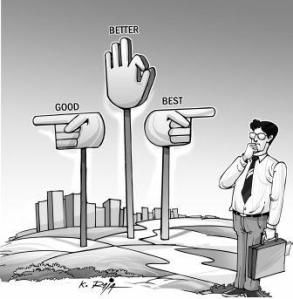They’re coming. The lists are coming, the predictions, the opinions and the trends-all those juicy posts that populate the month of December, they’re coming. So I wanted to get this out there while it could still mean something.
What’s right in social media?
Or better yet what went right? For me it was a mashup. It started with an eye catching commercial developed by Wieden + Kennedy and ended with videos that have been viewed more than 40 million times and total brand views on the web that have been estimated to have surpassed 110 million. What am I talking about?
And for those that are wondering whether it was worth it, sales for Red Zone(the actual Old Spice product) hit $1.6 million for the four-week period ending July 11, 2010. That was a 49 percent jump over the four-week period ending Feb. 21, 2010 according to SymphonyIRI. The other four Old Spice Body Wash products also showed a lift as well. Overall sales for Old Spice Body Wash rose 105 percent for that period.
This was a seminal moment in the worlds of social and traditional media. It was cool, different and most of all it was viral which is the holy grail for all digital marketers. As much as some people are apt to point out the #FAILS in social media, this was the big win of 2010.
What’s wrong with social media?
The semantics of social media education. Collectively I think we are continuing to focus on constantly rehashing what the definition of social media is. As an industry we keep redefining what social media is so much, that it’s causing some to go back and redefine what social media is to them. Is it tools? Is it a platform? Is it a mindset? A movement? What day is it?
We are influenced by influencers who are influenced by influencers…
Some are focusing on what it could be and what it can be, instead of belaboring the effort of trying to understand what it is. The barriers in social media are not so high that it is an exclusive club. Yet some want to create that mystique. I fear that we are getting caught up in the semantics of social media to an extent that it is bogging down not only us, but also companies of all sizes struggling to make money. It’s creating an air of impossibility, and we need to do a better job of removing that notion. It is still an effort, and rightly so, to show companies how to use social media effectively, but please, enough with the definitions of what social media is.
At some point we have to quit focusing on “What is it’ and focus more on the “What the heck, let’s try it.”
What’s next in social media?
One thing that is safe to say is that Google will make another play in the social space. Why? Because Google understands that if you can keep your people in network, then you can market to them, you can sell to them, and they are that much more valuable to you and your partners. Now add the mobile element to this and what you will see is a continuous explosion of mobile apps, mobile marketing, and mobile sites all geared towards our escalating migration away from the desktop.
Mark this down as well: As Facebook rolls out their Facebook email, look for there to be issues around privacy and data collection. I know, not much of a stretch… But, this move will further propel Facebook front and center as a legitimate threat to space previously occupied by Google, Yahoo and MSN. And it makes sense. Keeping the users of your social network “in network” with their own email, makes complete sense.
Lastly, our online social connections will continue to become more ubiquitous and less assumptive. They may become more platform specific as we continue to search for our tribes but ubiquity we reign in 2011 and beyond.
So what about you?
- What’s right in social media?
- What’s wrong?
- What’s next?








